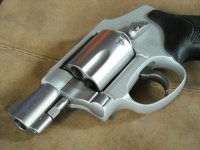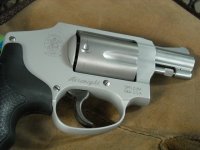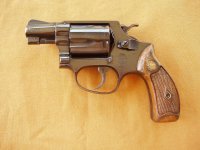shooter686
Member
- Joined
- Aug 4, 2011
- Messages
- 61
- Reaction score
- 9
What loads are you shooting in your J-Frames? Please include model, load data, etc.
I recently acquired a 642 and put some 158gr LSWC over a minimal charge of Unique (4.2 grns) and WOW! Did those little fellars smack the snot out of my hand! Its been a while since I fired a j-frame, and this is my first airweight, but 15 rounds was all I could handle!! After some concern over the wisdom of my new purchase, Trail Boss came to mind....Put together some 158 grn LSWC over 3.0 grns TB and.....I could shoot these things all day!
Anyway - love to hear about your J-frame loads and throw in a few pictures if you like! Pics of my 642 attached.
Shooter686
I recently acquired a 642 and put some 158gr LSWC over a minimal charge of Unique (4.2 grns) and WOW! Did those little fellars smack the snot out of my hand! Its been a while since I fired a j-frame, and this is my first airweight, but 15 rounds was all I could handle!! After some concern over the wisdom of my new purchase, Trail Boss came to mind....Put together some 158 grn LSWC over 3.0 grns TB and.....I could shoot these things all day!
Anyway - love to hear about your J-frame loads and throw in a few pictures if you like! Pics of my 642 attached.
Shooter686





